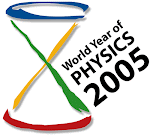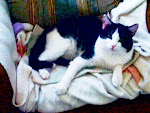
"Laid-Back in the Lab, Maybe, but They Spurred the Weapons Race"
by
John Markoff
July 4th, 2011
The New York Times
by
John Markoff
July 4th, 2011
The New York Times
In 1952 the physicist Ernest O. Lawrence assembled a group of young scientists to design weapons that were radically different from those being designed at Los Alamos National Laboratory in New Mexico, the nation’s original nuclear weapons lab.
Lawrence Livermore National Laboratory, as the research group came to be known, was the “second lab,” intended to compete with Los Alamos and create new ideas, according to Sybil Francis, executive director of the Center for the Future of Arizona, a policy research group, who is also affiliated with the Consortium for Science, Policy and Outcomes at Arizona State University.
Dr. Francis researched the history of the nation’s nuclear weapons program when she was in graduate school at the Massachusetts Institute of Technology in the mid-1990s. Her doctoral dissertation was on the competitive system of weapons design. In her original research at the lab, she uncovered a trove of old photographs, including one that showed a weapons developer sitting with his lunch sandwich on a suitcase bomb with a yield of several kilotons.
In a recent telephone interview she said the photos revealed the casual approach to designing weapons that prevailed at Livermore, in a significant contrast to the more formal, bureaucratic national security culture that was characteristic of Los Alamos.
She said the rivalry between the labs played an essential role in the emergence of intercontinental ballistic missiles, which required lighter, more powerful weapons.
“It is not an exaggeration to say that the competition between the labs was as significant — or even more significant — as the United States-Soviet Union competition in driving innovation in the arms race,” she said. “This led to a culture of entrepreneurialism at Livermore, a less conservative approach to weapons design and riskier endeavors.”
While duplicate research within the government is typically viewed as wasteful, Dr. Francis is now exploring the idea that intragovernmental competition might be encouraged to stimulate technological innovation. She argues that the competition set up between Los Alamos and Livermore might serve as a model for national scientific research and development initiatives in the future The photos of suitcase weapons were taken in the spring of 1955, when Livermore conducted fission bomb tests in a program code-named Operation Teapot. The research led directly to the hydrogen bombs designed in the late 1950s that were installed in Polaris missiles by the Navy.





























!["Coupling" 1976 [Gum-bichromate]](http://2.bp.blogspot.com/_IoU3bEFUwWc/S69lnr9G6AI/AAAAAAAAH58/O40Gg-G6rKk/S150/COUPLING+3.jpg)







No comments:
Post a Comment